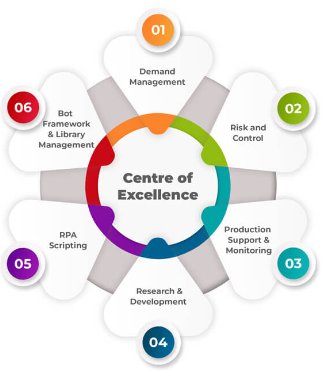Six Benefits of Integrating BPM with Mature RPA Programs
The convergence of Robotic Process Automation (RPA) and Business Process Management (BPM) holds tremendous operational excellence and automation potential. While RPA has proven its worth in eliminating mundane and repetitive tasks, orchestrating critical customer journeys across organizational silos demands a more sophisticated capability. By seamlessly integrating BPM with mature RPA programs, organizations can achieve unprecedented transparency, visibility, control, and orchestration, revolutionizing their overall business operations.

Over the past decade, RPA has witnessed exponential growth, enabling organizations to automate high-volume, repetitive knowledge work tasks and realize rapid Return On Investment. These well-optimized RPA bots have tirelessly automated many tasks in finance, HR, and various business units. Partly because of this success, it is not uncommon to find RPA teams boasting of an automation pipeline devoid of low-hanging fruit, having automated all tasks that align with the existing paradigm of being FTE-heavy, high volume, and transactional.
For companies with mature RPA programs, incorporating BPM can yield multiple benefits. While RPA excels in automating rule-based tasks, BPM focuses on optimizing end-to-end business processes and workflow management, leveraging various technologies and human-in-the-loop interactions. The fusion of these approaches, known as Business Process Automation (BPA), creates a symbiotic relationship that enhances overall operational efficiency and effectiveness.
Here are six key benefits of integrating BPM with mature RPA programs:
1. Manage Exceptions:
As task automations increase, so does the volume of exceptions. BPM provides a centralized platform to effectively handle these exceptions, eliminating the overwhelm of ad hoc approaches such as emails, spreadsheets, and SharePoint.
2. End-to-End Visibility & Control:
Traditional RPA is limited when managing critical cross-functional processes. BPM overcomes this by offering complete control and visibility into complex, long-running processes and operational journeys, orchestrating the formerly disconnected human and RPA tasks into seamless workflows.
3. Execute Work in Order:
BPM excels at workflow management, ensuring that tasks are executed in the correct order. Organizations streamline process flows and achieve greater efficiency by coordinating interactions between RPA bots and human workers.
4. Unlock Automation Potential:
BPM is a powerful tool for identifying areas where bottlenecks exist, and where task automation can be applied. With the right mix of RPA robots, low-code platforms, APIs, and AI tools, organizations can optimize their automation potential and drive Business Process Automation.
5. Optimize Operations:
In a world where sustainable competitive edges are elusive, the true differentiator lies in bettering operations. By incorporating BPM into mature RPA programs, organizations can optimize their operations, reduce costs, and improve efficiency, positioning themselves ahead of the competition.
6. Achieve Visionary Goals:
Business Process Automation empowers organizations to transform their core processes. By embracing a top-down approach and leveraging the capabilities of their Automation Centers of Excellence, companies can drive digital transformation, unleashing their visionary goals.
Through implementing BPA, organizations can achieve comprehensive process optimization, reduced operational costs, and improved efficiency, resulting in a holistic optimization of operations. By transcending the boundaries of individual tasks, businesses can reshape their core processes for maximum effectiveness, tapping into the significant business value within these key processes. Organizations must focus on these core processes to drive transformative impact, enhancing their unpredictable, case-dependent, and data-driven operational journeys.
By adopting a top-down approach and empowering automation Centers of Excellence (CoEs), companies can unleash their visionary goals where true transformation occurs by understanding the customer journey across internal operations, often requiring orchestration of actions in an event-condition-action fashion. Stay tuned for our upcoming blog posts, where we delve deeper into the power of case management in achieving this goal.









